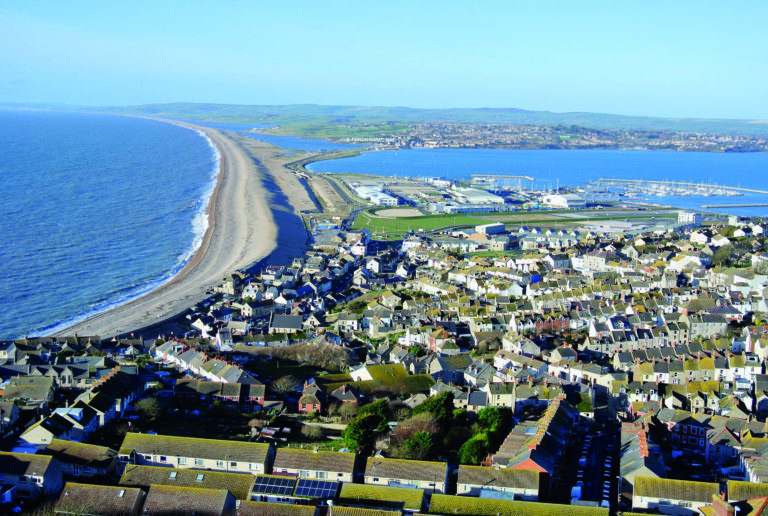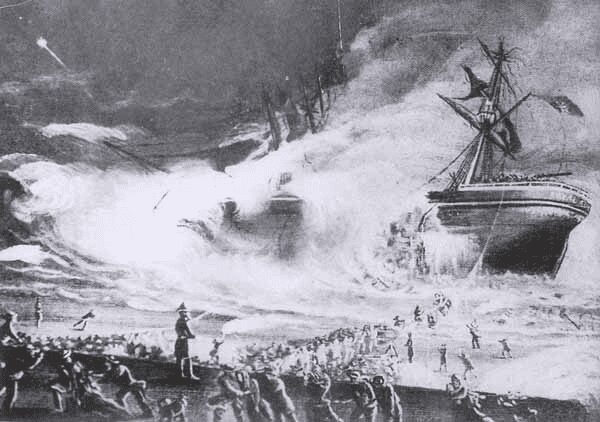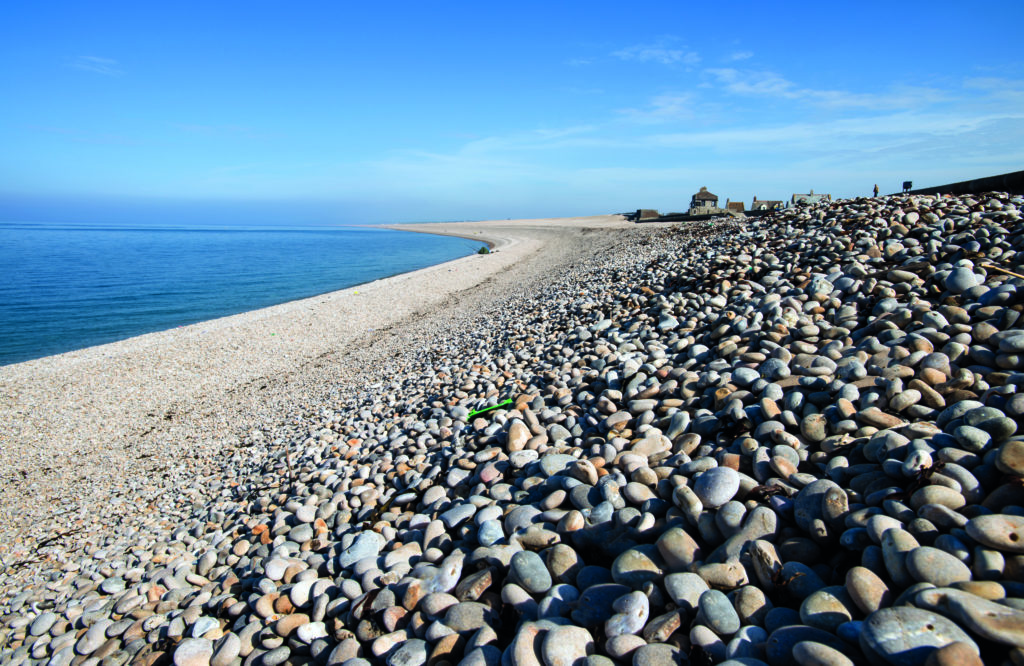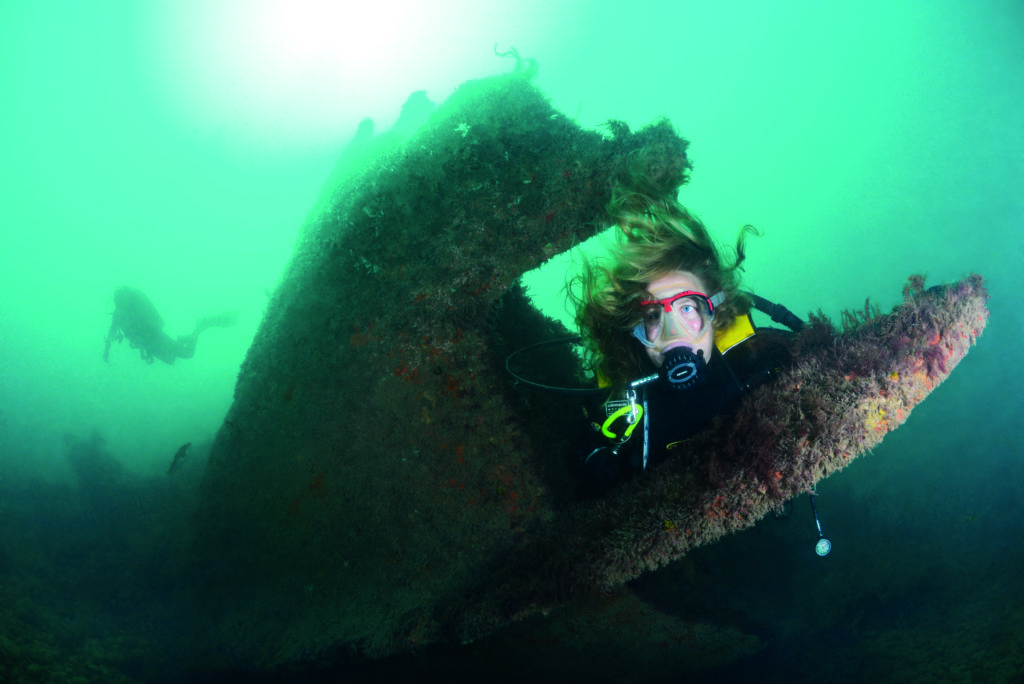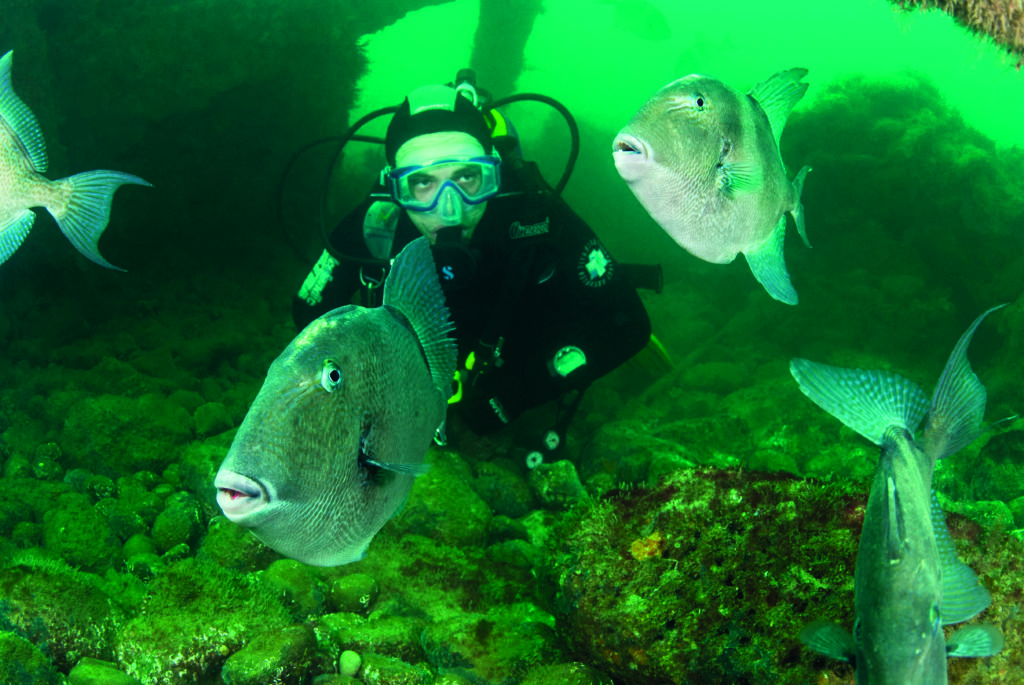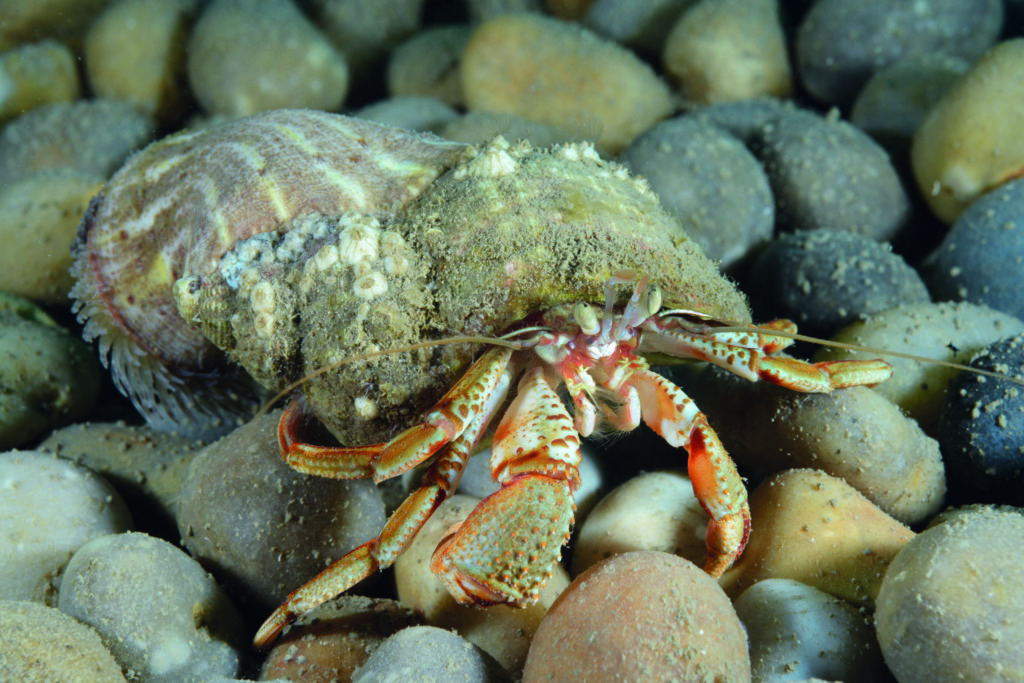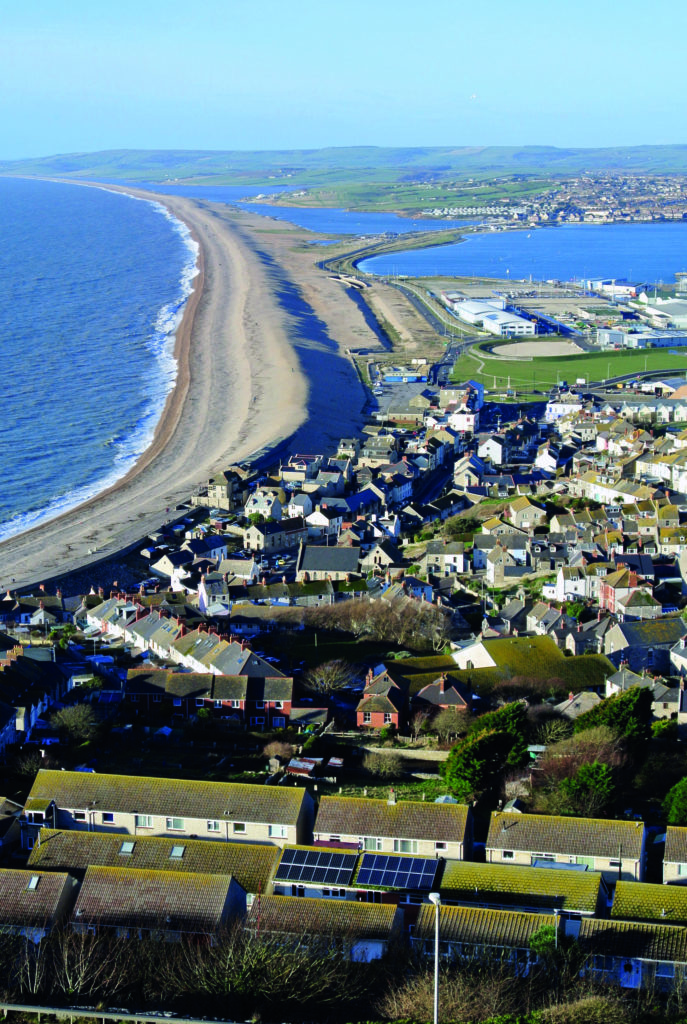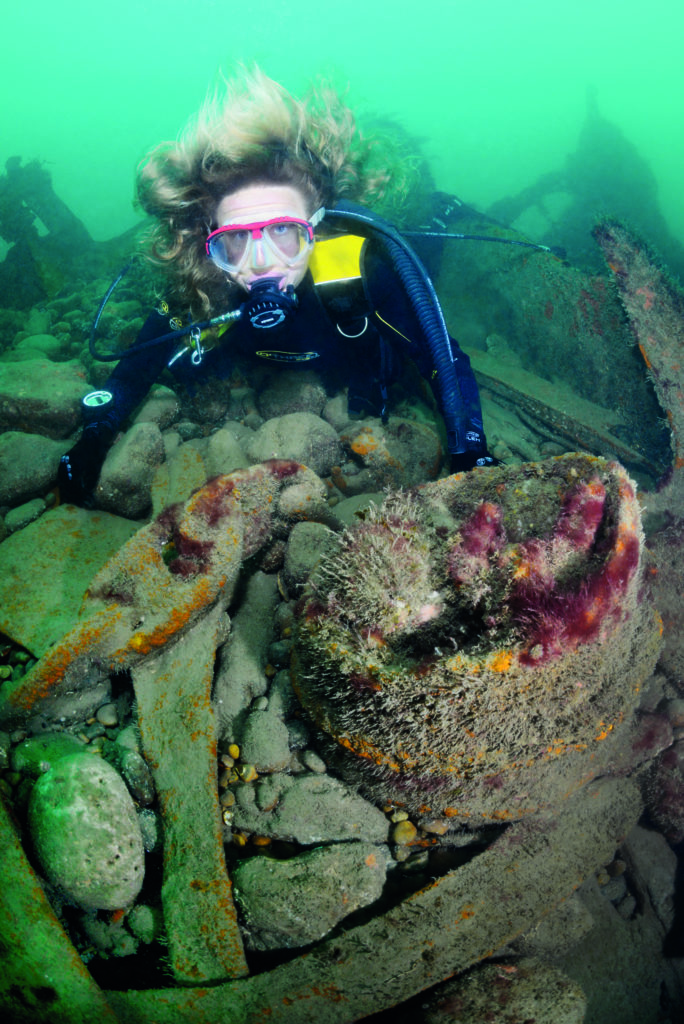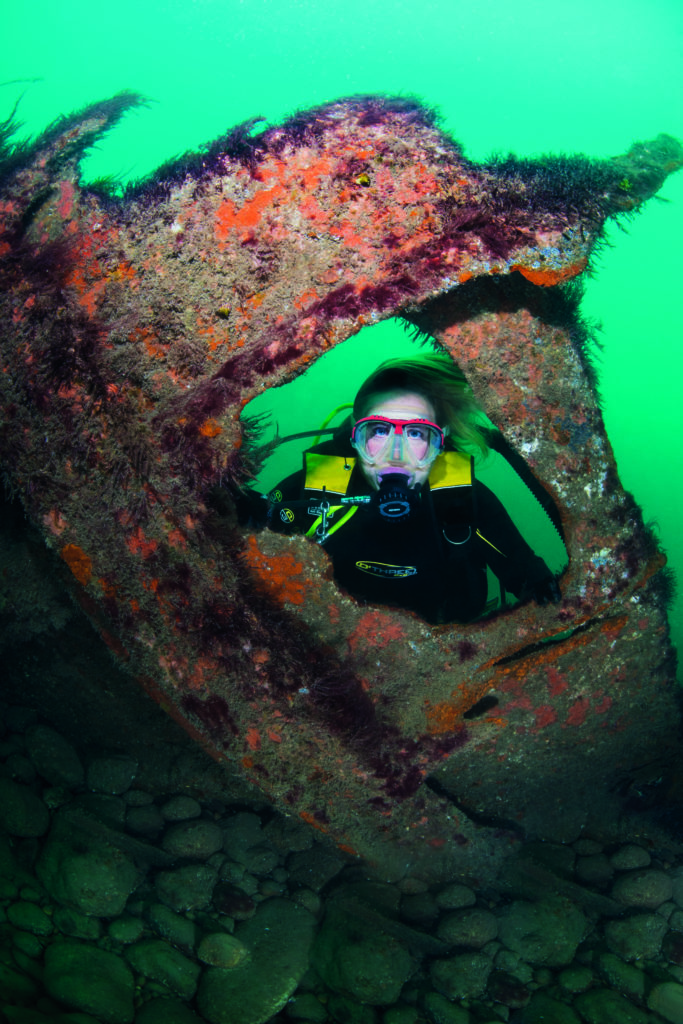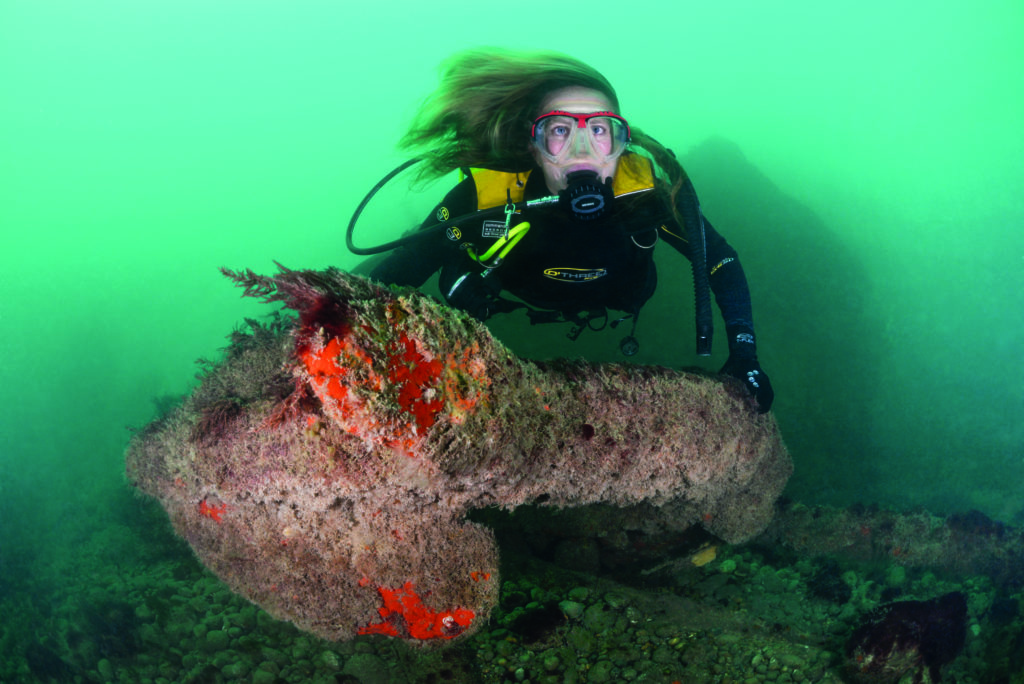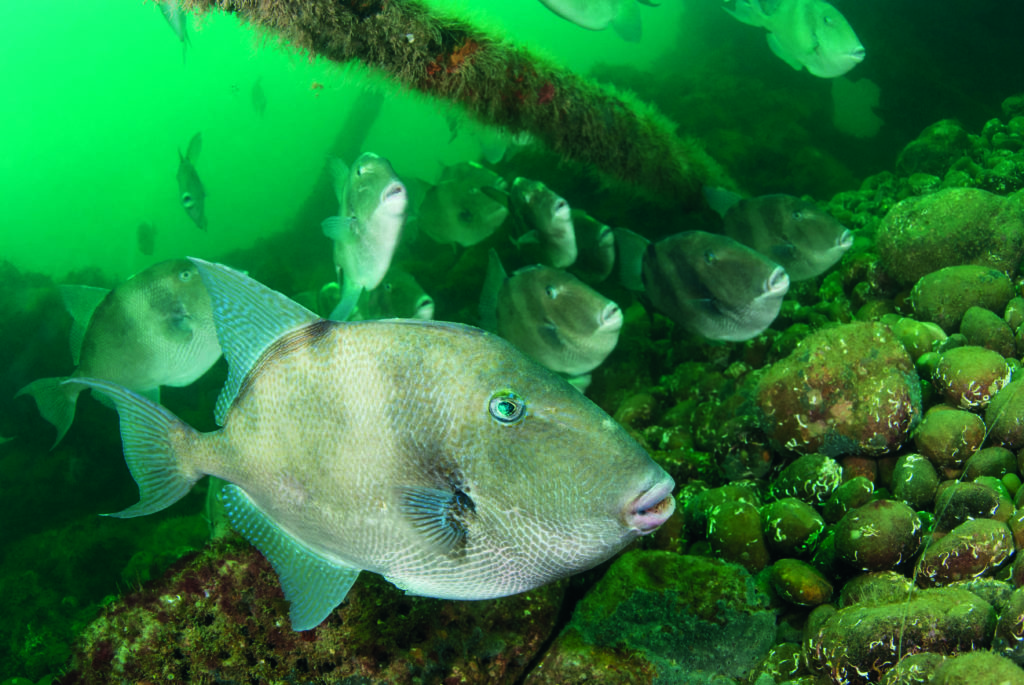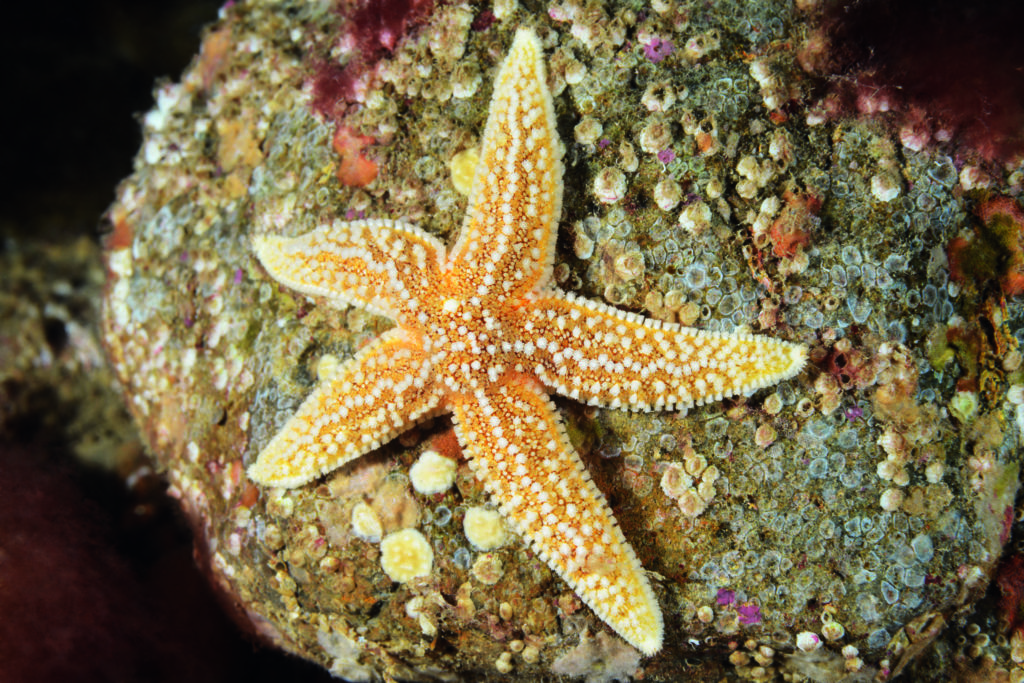STUART PHILPOTT has clocked up more than 300 dives on the Royal Adelaide off Chesil Beach in Dorset, but he never tires of this wreck. He explains why.
Over the centuries, Chesil Beach in Dorset has seen its fair share of shipwrecks. The Royal Adelaide is probably the most famous of them all. Her remains lie approximately 100m off the pebble beach, which is no more than two or three minutes’ moderate fin-kicking for the average diver.
But beware: the main site covers only a small area and can easily be missed. The most prominent features are the anchor, foredeck winch, huge mound of chains and a section of the starboard bow, which stands 3-4m proud of the seabed.
Maximum depth rarely exceeds 15m, so dive-times of an hour or more are plausible using a 12-litre cylinder. This all adds up to an exciting shore-diving proposition suitable for beginners through to more advanced scuba divers.
Planning the dive
Does this sound too good to be true? Alas yes, there is one small catch. Walking up and over Chesil Beach in full diving kit, especially on a hot summer’s day, can be quite a shock to the system and usually goes hand in hand with a barrage of four-letter expletives. I’ve even had some divers flatly refuse to walk the walk. At least this dive-site guarantees to deliver an unforgettable experience!
For more than 25 years I have been making the cardiac-inducing climb up and over Mount Chesil, on some occasions twice and, if I am feeling particularly stupid, three times in a day. Who needs to do a step class!
I have conducted open-water training dives, night dives, navigation dives and photo workshops at this site. Having logged more than 300 Adelaide dives, I think I’ve gained enough experience to write an accurate review.
Marine-life sightings can be exceptional, with a huge variety of species on show from the more exotic undulate rays, john dory, cuttlefish, crawfish and triggerfish to the run-of-the-mill lobsters, edible crabs, shoals of pouting, sea bass, pollack and ballan wrasse. On my last outing, I literally bumped into a monster 1.5m monkfish.
Arriving at the site
Follow the Portland beach road (A354) onto the causeway. The Fleet lagoon is on your right, and a boatyard on the left. After crossing the bridge, use the car park next to the Fine Foundation Chesil Beach Centre. Facilities include an onsite café and reasonably clean public toilets.
Parking costs £2 for two hours. Stay close to the beach centre for the Royal Adelaide wreck. Gear up with full diving kit in the car park and then walk over the wooden footbridge. For any last-minute gas or equipment requirements, Underwater Explorers is just a few miles up the road.
Dive-briefing
The heart-thumping trudge over to the Royal Adelaide can be daunting. Try to keep to the grassy scrub rather than walking on the relentlessly shifting pebbles. A word of warning: the walk back is even worse! The beach incline is much steeper and the cascading pebbles give way underfoot, very similar to walking up an escalator moving downwards. Keep a defibrillator close to hand!
Over the years I’ve seen them all, from the not-so-sensible wearing twinsets to the clever old duffers designing special kit-carrying sledges. Some divers won’t even consider a shore-dive and prefer to use a charter boat instead. Contact Skin Deep Diving at Portland Marina, or Dale Spree at Dive Beyond for more information on dive schedules.
Entries & exits
Surf entries and exits can be quite tricky. All but a puff of prevailing south-westerlies will render Chesil Beach undiveable, and conditions can change even during a dive. On hearing the woomph of breaking waves followed by the rumbling of pebbles, be prepared for a tricky exit scenario.
Many a time I have had pebble shapes impregnated into my forehead from being picked up by the huge swells and spewed out on the beach head-first! To avoid any unnecessary pain, check out the Chesil Beach Watch page on Facebook before starting your journey.
Tides are also worth considering. Low-water springs mean more exposed beach to walk across. When the current is running hard, I usually stay inside the wreck or very close by. Drifting from the entry point can mean a longer walk back to the car park.
Anglers are prevalent all along the beach, so keep an eye out under water for any discarded fishing lines and weights. Unfortunately, there are many! I keep finding lobster and crabs tangled up on the seabed. I have managed to save a few, but there are probably many more that die.
I carry a delayed SMB but don’t usually deploy it. Overhead boat traffic is almost non-existent and there is a good chance of getting snagged up on fishing lines. The best option is to send up the SMB before heading back to the shore.
The Royal Adelaide’s history
A few years ago I visited the Dorset Archives and found some old newspaper clippings recording the Adelaide’s demise. On 14 November, 1872, the 1320-ton ship left London bound for Sydney, Australia.
The 72m ironclad clipper was fully laden with 2,600 tons of mixed cargo and 35 fare-paying passengers hoping to start a new life Down Under. Captain Martin and his crew of 31 brought the tally to 67 souls.
On Monday, 25 November, the Royal Adelaide was sighted off Chesil Beach, caught in a strong south-westerly gale. Despite the crew’s desperate attempts to change tack, the ship was driven onto the beach.
The Coastguard managed to attach a line to the ship using rockets and began transferring passengers and crew to safety using a cradle. Seven drowned during the rescue attempt. One elderly woman, too afraid to get into the cradle, was seen standing alone on the deck as the ship broke up and sank beneath the waves.
Word quickly spread about the Adelaide’s demise and, as darkness fell, more than 1,000 people gathered on the beachfront to watch the ship breaking up. Shipwrecks were exciting times, giving locals the opportunity to loot any cargo that got washed ashore.
The Adelaide was carrying a consignment of rum, brandy and a very refined form of gin called Wolffs aromatic schnapps. This initiated a mass drinking spree on the cold, wet beach. According to reports, 20 people died of exposure in the harsh November conditions.
For more background information on the Royal Adelaide, visit the Portland Museum (open 10.30am until 4pm most days). There are a number of glass display cabinets containing clay pipes, children’s leather shoes and other personal effects. You can also find a selection of brass items there, including a full-size replica ship’s bell.
Exploring the wreck
Usually there are no marker buoys to show where the wreck is located. I think only once or twice over the past 20 years have I seen a buoy floating above the site. The marks given in the local dive guides are reasonably accurate and easy to follow, although some fine tweaking is normally required.
As a rough guide, after crossing the wooden footbridge, bear right about 30° and keep walking up and over Chesil Bank to the beachfront. At extreme low tides, it’s possible to see some exposed wreckage above the shoreline, which is a good indication that you’re in the right place.
I usually collapse at the water’s edge to catch a quick breather before donning my fins, hood and mask. It’s safer to shuffle into the sea backwards while breathing from regulators. The bottom consists of a number of pebble ledges descending to around 12m. Then it gradually slopes off to 16m-18m.
The Royal Adelaide sits at 12m-15m, depending on tides. At 13m, conduct a back and forth sweep across the seabed until the wreck is located. Knowing the surroundings so well gives me an advantage. I make directional adjustments depending on the specific metal plate, bollard or stanchion I see. But even so, I still occasionally miss the wreck, especially in low visibility.
Most of Royal Adelaide is broken up and buried beneath the shingle. Only the starboard bow, foredeck winch, chain-locker and anchor remain visible. There are no overhead areas. Every year I go back and find new parts exposed, especially after a bout of heavy storms.
There are always lobster and edible crabs hiding beneath the twisted metal plates, as well as giant-sized congers peering out. For macro lovers, the finger-nibbling tompot blennies are extremely photogenic.
Grey triggerfish
Late-August is normally when the first grey triggerfish are sighted. They get caught in the Gulf Stream and end up congregating at selected hotspots along England’s south-west coast, including on the Adelaide. Some years I have seen as many as 100 cruising around the wreck.
The grey triggers are extremely passive and nothing like their infamous relative the titan trigger. They are very inquisitive and often come close to divers. There can’t be many places in the UK where divers can enjoy such an interactive experience.
Unfortunately, this is a one-way ticket for the triggers. They are poor swimmers, so can never return. When the water temperature drops, the triggers will die.
In December it’s quite common to find trigger carcasses washed up on the beach. Sadly, over the past few years most of the triggers have been fished out by anglers within a few days of their arrival.
Depending on the current’s direction, it’s also possible to find the remains of another ship, the Nor. A huge three-bladed propeller complete with shiny bronze coupling sits upright at 7m-8m and, deeper at 15m, the rarely visited boiler is an absolute oasis of marine-life activity.
The Royal Adelaide is a highly under-rated shore-diving wreck-site suitable for most experience levels. The killer walk discourages most divers, but the charter boat option is always available. Recently far more low-lying wreckage has been uncovered. Once located just follow the debris field, which lies parallel to the shoreline.
This connects the main Adelaide wreck and the Nor boiler. The pebble seabed isn’t as prone to silting up and visibility can, at times, exceed 10m. Marine life is always big on variety and quantity – and with the possibility of those seasonal triggerfish encounters.
Photographs by Stuart Philpott
Also on Divernet: Exploring HMT James Fennel, Blue Shark Encounters In Cornwall, Diving Kimmeridge Bay, The ‘Wick’ At St Abbs, The Swanage Pier Dive, The Countess Of Erne, Diving At Drawna Rocks
